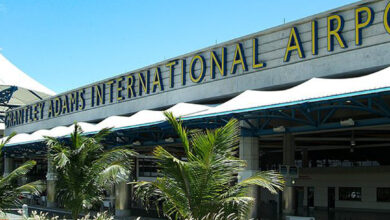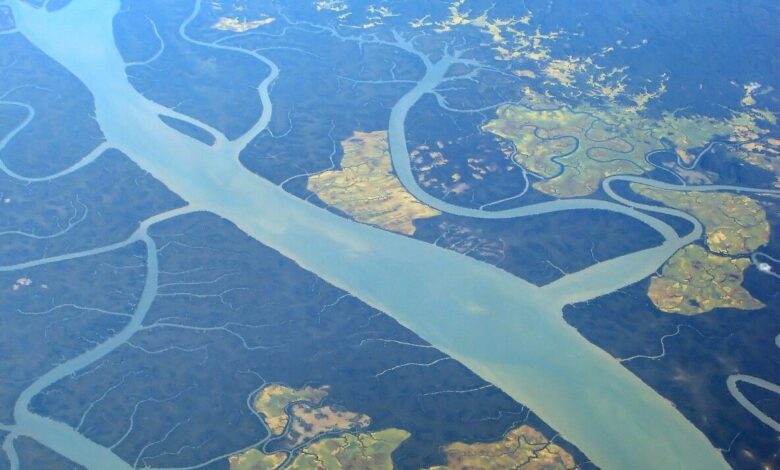
A Journey Back in Time on the Irrawaddy River
A journey back in time on the Irrawaddy River, tracing its rich history and captivating beauty, awaits. From ancient riverfaring to modern-day exploration, this immersive experience unveils the vibrant tapestry of cultures, landscapes, and historical events that have shaped this iconic waterway.
Imagine gliding along the Irrawaddy, witnessing the breathtaking landscapes that have remained largely unchanged for centuries. Explore the diverse communities that have thrived along its banks, experiencing their unique traditions and crafts. This journey promises a captivating encounter with history, culture, and nature.
Introduction to the Irrawaddy River Journey
The Irrawaddy River, a lifeline of Myanmar (Burma), has witnessed centuries of human activity, from ancient trade routes to modern tourism. Its vast expanse and intricate network of tributaries have shaped the cultural landscape and daily lives of the people who depend on it. This journey back in time will explore the river’s historical significance, the various modes of transportation that have traversed its waters, and the enduring impact of the Irrawaddy on the region.The Irrawaddy River holds immense cultural significance for the people of Myanmar.
It’s more than just a waterway; it’s a source of sustenance, a conduit for trade, and a symbol of the nation’s identity. The river’s rich history is intertwined with the development of settlements, the rise and fall of empires, and the traditions that have been passed down through generations.
Historical Overview of River Travel
The Irrawaddy River has been a vital artery for trade and transportation for millennia. Early settlements sprang up along its banks, facilitated by the ease of movement and access to resources. Ancient kingdoms utilized the river for both commerce and military expeditions. Records show that trade routes thrived along the river, connecting distant communities and fostering cultural exchange.
Modes of Transportation
The methods of travel on the Irrawaddy River have evolved significantly over time, reflecting the changing needs and technologies of the region. From simple rafts to sophisticated riverboats, the river’s currents have shaped the vessels used to navigate its waters.
- Early modes of transportation relied heavily on simple rafts and dugout canoes, ideal for smaller rivers and short distances. These methods were fundamental to the daily lives of communities, enabling local trade and communication. They were readily available and adaptable to varying water conditions, reflecting the resourcefulness of the people.
- As trade increased, larger vessels, like flat-bottomed boats and barges, were developed. These were capable of carrying larger loads over longer distances, significantly boosting the volume of goods and people transported. The design and construction of these vessels reflected advancements in engineering and shipbuilding techniques, adapted to the specific needs of the river.
- The introduction of steamboats marked a turning point in river travel. These larger vessels, powered by steam engines, could navigate the river more efficiently and reliably, even against the current. The introduction of steamboats significantly reduced travel time and increased the capacity for transporting goods and people. Steamboats enabled long-distance journeys, which facilitated the growth of cities and trade networks.
Journey Length and Duration
The typical journey length and duration on the Irrawaddy River varied considerably depending on the destination and the mode of transportation. For example, a journey to a nearby town might take a few hours, while a journey to a city further upstream could take several days or even weeks. The introduction of modern transportation like steamboats drastically shortened the time required for longer journeys.
Transportation Methods Through Time, A journey back in time on the irrawaddy river
| Era | Transportation Method | Notable Features | Time Taken (estimate) |
|---|---|---|---|
| Pre-Colonial | Rafts, Dugout Canoes | Simple, low-capacity, reliant on natural currents | Days to Weeks (depending on distance) |
| Early Colonial | Flat-bottomed Boats, Barges | Increased capacity, suitable for bulk goods | Days to Weeks (depending on distance) |
| Late Colonial | Steamboats | Powered by steam engines, increased speed and capacity | Days to a few weeks (depending on distance) |
| Modern Era | Motorized Boats, Ferries | More efficient and faster than earlier methods | Hours to a few days (depending on distance) |
Exploring the River’s Natural Beauty
The Irrawaddy River, a lifeline for the region, boasts a captivating tapestry of natural beauty. From lush riparian forests teeming with life to the majestic sweep of the river itself, the journey offers a unique perspective on the interplay between human life and the natural world. This exploration delves into the diverse flora and fauna, the dramatic landscapes, and the profound impact of the river on the surrounding ecosystem.The river’s winding path through the landscape reveals a dynamic interplay between the river’s geography and the surrounding environment.
This influence is clearly evident in the variety of habitats found along its banks, supporting a rich biodiversity. The Irrawaddy River’s journey is not merely a passage; it’s a story etched in the land, a testament to the power of nature.
Unique Flora Along the Irrawaddy
The riparian forests bordering the Irrawaddy are a haven for a wide array of plant life, adapted to the unique conditions of the riverine environment. Trees like the various fig species, with their distinctive aerial roots, and the towering Dipterocarps, are common sights. These trees provide crucial habitat for numerous animals, while their dense canopy shades the forest floor, creating a microclimate that supports a rich understory of ferns, orchids, and other flowering plants.
The seasonal floods and receding waters create a dynamic cycle of growth and decay, influencing the types of vegetation that thrive along the river’s edge.
Fauna of the Irrawaddy River
The Irrawaddy River is a critical habitat for a diverse range of animals. From the elusive Irrawaddy dolphins, a remarkable species found only in the river systems of Southeast Asia, to the playful monkeys that swing through the trees lining the banks, the river supports an abundance of wildlife. Numerous bird species, including migratory ones, find sustenance and shelter along the riverbanks, creating a vibrant avian chorus.
The river is a vital source of food and water for numerous fish species, many of which are important components of the local diet.
River Landscapes and Geography
The Irrawaddy River’s journey unfolds through a series of diverse landscapes. From the lush green valleys in the upper reaches to the broader, more open plains in the lower reaches, the river’s course shapes the surrounding terrain. The river’s meandering path creates oxbow lakes, which act as vital nurseries for fish and other aquatic life. The varied elevation and terrain along the river’s banks result in a spectrum of habitats, from dense forests to open grasslands.
The river’s impact on the surrounding environment is deeply interwoven with the history and culture of the region.
Exploring the Irrawaddy River felt like stepping back in time. The ancient temples and bustling markets were captivating, but keeping track of office packaging and shipping costs can be equally challenging. Luckily, resources like staying on top of your office packaging shipping supplies costs help you stay organized and budget-conscious, even during a journey back in time.
It’s all about finding balance, whether you’re navigating ancient cities or modern office demands.
Wildlife of the Irrawaddy River: A Detailed Overview
The following table provides a snapshot of the diverse wildlife found along the Irrawaddy River, categorized by species, habitat, and conservation status. This data highlights the importance of conservation efforts in protecting these vulnerable species.
| Species | Habitat | Conservation Status |
|---|---|---|
| Irrawaddy Dolphin | Freshwater rivers and estuaries | Endangered |
| Asian Elephant | Riverine forests and grasslands | Vulnerable |
| Gharial | Freshwater rivers | Critically Endangered |
| Giant Soft-Shell Turtle | Riverine habitats | Vulnerable |
| Various Bird Species | Riverbanks, forests, and wetlands | Various, from Least Concern to Endangered |
Ecosystem Role of the Irrawaddy River
The Irrawaddy River plays a critical role in the regional ecosystem. It serves as a vital water source for both humans and wildlife, supporting agriculture, fishing, and numerous industries. The river’s floods deposit fertile silt along its banks, enriching the soil and supporting agricultural production. The diverse habitats along the river’s course provide essential breeding and feeding grounds for countless species.
The river’s health is directly linked to the health of the entire ecosystem, underscoring the importance of sustainable practices for its long-term preservation.
Cultural Experiences Along the Journey
The Irrawaddy River, a lifeline for generations, winds through diverse landscapes and connects communities with rich cultural heritages. This journey offers a unique opportunity to witness the vibrant tapestry of human life woven along its banks. From bustling riverside towns to secluded villages nestled amongst the lush greenery, each community possesses its own unique identity, reflected in their traditions, customs, and artistic expressions.
The river acts as a common thread, connecting these disparate communities, while simultaneously highlighting the remarkable diversity of human experience.The river’s communities are not isolated entities; rather, they are interwoven into a larger social fabric. Interactions between these communities, while often subtle, are essential to understanding the river’s role in fostering social cohesion and cultural exchange. The shared experience of navigating the river, trading goods, and participating in religious festivals strengthens bonds between communities and allows for a rich exchange of knowledge and cultural practices.
Diverse Communities Along the River
The Irrawaddy River flows through a region inhabited by numerous ethnic groups, each with its distinct traditions and customs. These communities have developed unique ways of life, adapted to the challenges and opportunities presented by the river’s environment. This diversity is a testament to the resilience and adaptability of the human spirit.
Primary Occupations and Cultural Practices
The livelihoods of communities along the river are often intertwined with the river itself. Fishing, agriculture, and trade are common occupations, each shaped by the river’s seasonal rhythms and the fertile lands it nourishes. The cultural practices of these communities are deeply rooted in their daily lives, reflecting their close relationship with the natural world. Traditional ceremonies, storytelling, and artistic expressions are all integral parts of their cultural heritage.
| Community | Primary Occupations | Cultural Practices |
|---|---|---|
| Mon Ethnic Group | Farming, fishing, and small-scale trade. | Unique weaving techniques, elaborate Buddhist ceremonies, and storytelling traditions. They often maintain close ties to the land and practice sustainable farming techniques. |
| Kayan People | Agriculture, fishing, and boat building. | Known for their distinctive neck rings, their traditional ceremonies often involve elaborate costumes and rituals. Their deep connection to the river is evident in their intricate boat-building skills and knowledge of the river’s currents. |
| Burmese Communities | Various, from fishing and farming to trade and artisan crafts. | Diverse, encompassing a blend of Buddhist traditions, local festivals, and intricate artistry in woodworking, metalworking, and textiles. |
| Shan Ethnic Group | Agriculture, particularly rice cultivation, and trade. | Known for their intricate weaving and pottery traditions. Their rich cultural heritage is often expressed through elaborate festivals and ceremonies. |
Examples of Local Crafts and Artistic Expressions
The river communities are renowned for their diverse crafts and artistic expressions. Woodcarving, weaving, pottery, and metalworking are prevalent, often reflecting local beliefs, stories, and the unique resources available. The intricate patterns and symbolism embedded in these crafts showcase the artistry and creativity of the communities. For example, the intricate patterns of Shan textiles, the elegant forms of Mon wood carvings, and the vibrant colors of Kayan weaving are testaments to the rich cultural heritage of the region.
The local artisans often use natural dyes and materials found along the river, further emphasizing their close connection to the environment.
Historical Significance of the Irrawaddy River
The Irrawaddy River, a lifeline for Myanmar (Burma), has witnessed centuries of human activity. Its fertile banks have nurtured civilizations, and its waters have facilitated trade and cultural exchange. From ancient kingdoms to modern-day life, the river’s influence on the region’s history is profound and multifaceted. This journey along the Irrawaddy will reveal the river’s role as a crucial connector, a historical highway, and a witness to countless stories.The Irrawaddy River has served as a vital artery of commerce and cultural transmission for millennia.
Its navigable length, coupled with its rich agricultural lands, made it a hub for trade and interaction between various communities. The river’s significance in shaping the history of the region is undeniable, evidenced by the historical settlements and significant events that took place along its course.
Early Kingdoms and Empires
The Irrawaddy River played a critical role in the rise and fall of numerous kingdoms. Its strategic location facilitated the expansion of these powers, allowing for control over trade routes and access to resources. Early settlements flourished along the riverbanks, gradually developing into significant trading centers. The river was instrumental in the establishment and growth of these communities.
- The Pyu Kingdom (circa 2nd century BCE – 11th century CE): The Pyu people, one of the earliest known inhabitants of the Irrawaddy basin, established a sophisticated network of cities and trade routes along the river. Their mastery of irrigation techniques and agricultural practices allowed them to thrive in the fertile lands. Archaeological evidence suggests a highly organized society connected to the river for their economy and governance.
My journey back in time on the Irrawaddy River was truly unforgettable, a mesmerizing glimpse into a rich history. While exploring the ancient temples and bustling markets, I couldn’t help but think about a healthy dose of Czech Republic spa towns, like those in Karlovy Vary or Mariánské Lázně. They offer a similar kind of escape, though in a distinctly European style, perfect for unwinding after the immersive experience of the Irrawaddy.
Ultimately, the river’s charm brought me back to my original quest, a journey back in time. a healthy dose of czech republic spa towns
- The Bagan Kingdom (11th–13th centuries CE): This kingdom, centered on the Irrawaddy, experienced a golden age of cultural and artistic flourishing. The river facilitated the transport of goods and people, strengthening the kingdom’s economic and political power. Bagan’s impressive temples and monuments, many located along the riverbanks, stand as testaments to the river’s importance. The river was a vital artery for the kingdom’s power.
Cruising the Irrawaddy River feels like stepping back in time. The ancient temples and bustling riverside markets transport you to a bygone era. Understanding how these destinations were marketed is key to appreciating their journey; pioneer online travel agencies ( advertising and the pioneer otas ) played a crucial role in making these journeys accessible. Ultimately, exploring the Irrawaddy River is a captivating experience that blends history with modern accessibility.
Trade and Commerce
The Irrawaddy River has always been a crucial conduit for trade. Its navigable waters enabled the transport of goods, such as timber, agricultural products, and luxury items, to and from various regions. This facilitated the growth of significant trading centers and influenced the economic development of the area.
- The Mon Kingdom (11th–13th centuries CE): The Mon kingdom controlled key river ports, establishing trading posts and engaging in significant commerce along the Irrawaddy. The river’s navigability was integral to the Mon’s power and prosperity.
- The Konbaung Dynasty (18th–19th centuries CE): This dynasty, centered in Ava, skillfully utilized the river for transportation, enabling the movement of troops, supplies, and trade goods. Their control of the river system played a key role in the dynasty’s expansion and influence. The Konbaung rulers understood the economic and strategic value of the Irrawaddy, making it a cornerstone of their administration.
Historical Sites and Landmarks
Numerous historical sites and landmarks are located along the Irrawaddy River. These sites provide invaluable insights into the region’s rich history, showcasing the architectural prowess and cultural significance of the various civilizations that thrived along the river’s banks.
- Bagan Archaeological Zone (Bagan, Myanmar): This UNESCO World Heritage Site is a treasure trove of ancient temples and monasteries, many situated near the river. The locations reflect the kingdom’s reliance on the Irrawaddy for transportation and resource access.
- Shwe Dagon Pagoda (Yangon, Myanmar): Located near the river, this iconic pagoda is a testament to the spiritual and cultural significance of the Irrawaddy River. The river’s accessibility likely influenced the site’s location.
Modern-Day Journey on the Irrawaddy
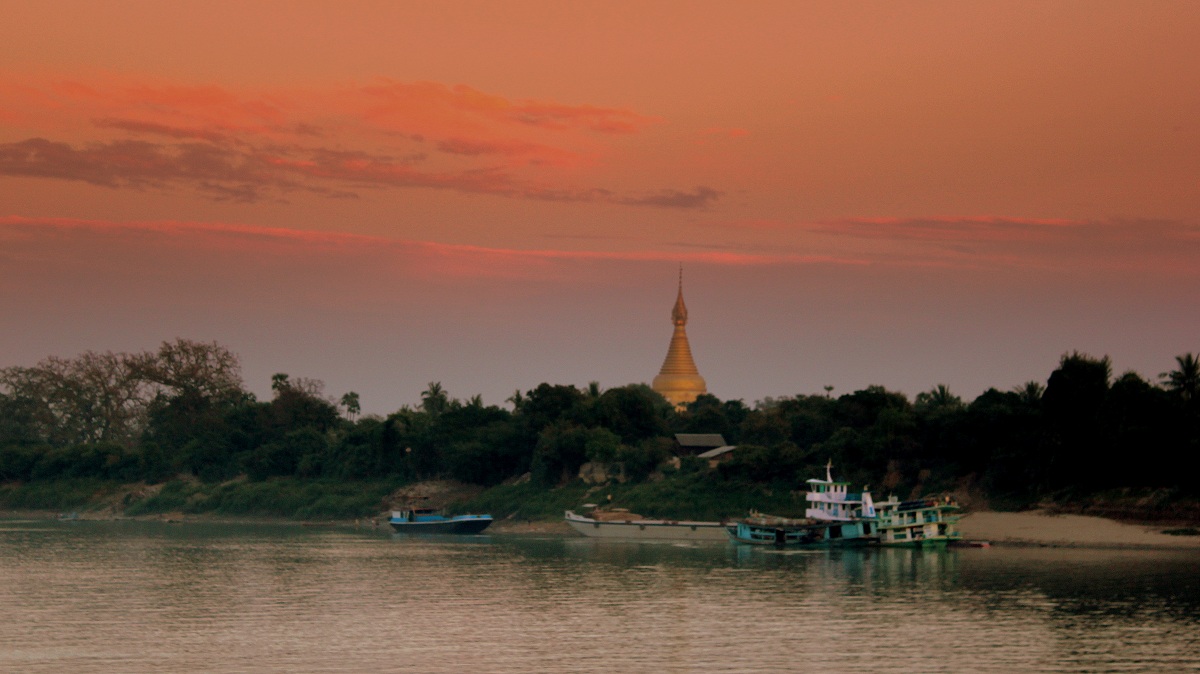
Stepping onto the Irrawaddy River today offers a fascinating blend of the historical and the modern. While the river’s ancient spirit endures, the experience is significantly altered by the presence of contemporary infrastructure and travel options. The rhythm of life along the river, once dictated solely by the flow of water and the ebb and flow of seasons, is now interwoven with the convenience and connectivity of the 21st century.The modern traveler can now explore the Irrawaddy River with a comfort and speed unimaginable to those who traversed it in centuries past.
This accessibility, however, also presents challenges, such as navigating the balance between preserving the area’s cultural heritage and catering to the demands of a modern tourist market.
Modern Amenities and Accommodations
The availability of accommodations and services has significantly improved. Modern hotels and guesthouses, often incorporating traditional local architecture, offer comfortable stays, while basic riverside lodgings provide more budget-friendly options. Restaurant options range from casual riverside eateries serving local cuisine to upscale dining experiences showcasing both local and international flavors. This diverse range allows travelers to tailor their culinary experiences to their preferences and budget.
Travel Options and Their Implications
The modern traveler has several options for navigating the Irrawaddy. Traditional longboats and smaller river vessels, though slower, still provide an immersive experience of the river’s natural beauty and allow for more intimate interaction with the local communities. Faster motorboats and ferries provide a more rapid means of travel, but potentially reduce the immersion in the local environment.
River cruises, offering a combination of speed and comfort, are also becoming increasingly popular, providing a curated experience that can be tailored to different budgets and interests.
- Traditional Longboats: These offer a slower, more immersive experience, often incorporating traditional craftsmanship. However, they may be less comfortable for extended journeys, and travel times can be significantly longer. They often provide more opportunities for interaction with local communities, giving a true taste of daily life.
- Motorboats and Ferries: These provide speed and efficiency, enabling travelers to cover greater distances in less time. However, they may detract from the immersive experience, potentially limiting interaction with the local environment. They are generally more suitable for those prioritizing efficiency and speed.
- River Cruises: These offer a blend of comfort, speed, and curated experiences, catering to a range of budgets and interests. Often featuring pre-arranged activities, they can be an excellent choice for those seeking a well-structured journey. However, the curated nature might limit spontaneity and the chance to truly wander off the beaten path.
Challenges and Opportunities for Travelers
The modern traveler faces both opportunities and challenges. The availability of transportation and accommodation has broadened the reach of the Irrawaddy River experience, making it more accessible to a wider audience. However, the influx of tourists can potentially impact the delicate balance of the local environment and culture. Careful management of tourism is crucial to ensure the sustainability of the river’s rich heritage and the livelihoods of the local communities.
Comparison of Historical and Modern River Journeys
| Feature | Historical Journey | Modern Journey |
|---|---|---|
| Mode of Transport | Traditional longboats, human-powered vessels | Motorboats, ferries, river cruises |
| Accommodation | Basic riverside lodgings, homes of locals | Hotels, guesthouses, riverside bungalows |
| Travel Time | Days or weeks for long distances | Days or hours, depending on the option chosen |
| Immersion in Local Culture | High degree of immersion due to extended interactions | Variable depending on the chosen mode of travel |
| Accessibility | Limited accessibility to wider populations | Significantly increased accessibility |
Illustrative Examples
To truly capture the essence of our Irrawaddy River journey, we need more than just words. Visuals are crucial to bringing the vibrant landscapes, rich culture, and historical significance to life. This section will showcase a series of illustrative examples, each designed to evoke a specific aspect of the river’s allure.
These illustrations, whether paintings, sketches, or photographs, will serve as windows into the past, present, and future of the Irrawaddy. They will transport the reader to the bustling riverbanks, depict the daily lives of the people who call the river home, and illustrate the historical significance of the river itself. They will capture the essence of the journey.
My journey back in time on the Irrawaddy River was truly unforgettable. The serene beauty of the riverbanks, the ancient temples, and the local culture all contributed to a sense of stepping back centuries. To enhance the experience, Avalon’s onboard activities are incredible, from cooking classes to cultural workshops; you can find more details on activities amped up on avalon ship.
It made the entire river cruise even more immersive and engaging, perfectly complementing the journey back through history.
Landscapes and Cultural Aspects
The journey along the Irrawaddy reveals a tapestry of natural beauty. From the lush green paddy fields that fringe the river to the dramatic mountain ranges that stand sentinel over the waterway, the landscapes are diverse and breathtaking. We’ll need illustrations showcasing these varying landscapes to fully appreciate the scenic diversity. A detailed landscape sketch of a fishing village nestled along the riverbank, with fishermen mending their nets, would evoke a sense of the community and the river’s importance to their livelihood.
- Paddy Fields and Villages: An illustration of a vibrant village nestled amidst expansive paddy fields, with villagers tending to their crops. This would highlight the agricultural significance of the river, and the way of life for many communities along its banks. A sense of tranquility and hard work would be central to this depiction.
- Mountainous Terrain: A sketch or painting of the dramatic mountain ranges that frame the river, with mist clinging to the peaks. This would illustrate the natural grandeur of the surrounding environment, emphasizing the Irrawaddy River’s journey through varied terrain.
- Riverine Life: An illustration of a bustling river port, with numerous boats, people, and goods. This would depict the importance of the river as a vital transportation and trade route, capturing the dynamism of daily life along the Irrawaddy.
Modes of Transportation
The Irrawaddy River has historically served as a critical mode of transportation. Illustrative examples should showcase the diverse vessels used for travel and trade throughout the ages. This section will explore these means of transport.
- Traditional Boats: An illustration of a longtail boat, a traditional vessel used for navigating the river’s currents. The illustration would show the intricate details of the boat’s construction, and the people using it. This would showcase the resilience of traditional craftsmanship and the continued use of these vessels.
- Modern Vessels: An illustration of a larger, modern cargo ship or passenger ferry navigating the river. This would illustrate the integration of modern transport with the river’s continued role in trade and travel.
- Historical Illustrations: A drawing of a historical trading vessel, showcasing the historical importance of the Irrawaddy as a vital trade route. It would capture the significant role of the river in ancient times.
Cultural Significance of the Illustrations
Each illustration should not only depict the scene but also convey the cultural significance of the activities taking place. These images should reflect the customs, traditions, and beliefs of the communities along the river.
- Religious Practices: An illustration of a religious ceremony taking place on a riverbank, depicting the spiritual connection many communities have with the river. The image would show rituals or ceremonies related to the river.
- Festivals: An illustration capturing the atmosphere of a local festival or celebration along the river. This would highlight the cultural richness and vibrant traditions that thrive along the Irrawaddy.
- Daily Life: An illustration showing people going about their daily lives – fishing, farming, or trading – alongside the river. This would provide a nuanced view of the community’s dependence on the river.
Suggested Image Types
To create a comprehensive visual representation of the Irrawaddy River journey, a variety of image types would be beneficial.
- Landscapes: Images showcasing the diverse landscapes along the river, including lush paddy fields, dramatic mountains, and serene riverbanks.
- Portraits: Portraits of people from different communities along the river, showcasing their unique expressions and traditions. This will show the diversity of the people who live alongside the Irrawaddy.
- Historical Scenes: Images depicting historical events, trade activities, and significant landmarks along the river, highlighting the river’s historical importance.
Possible Itinerary Options
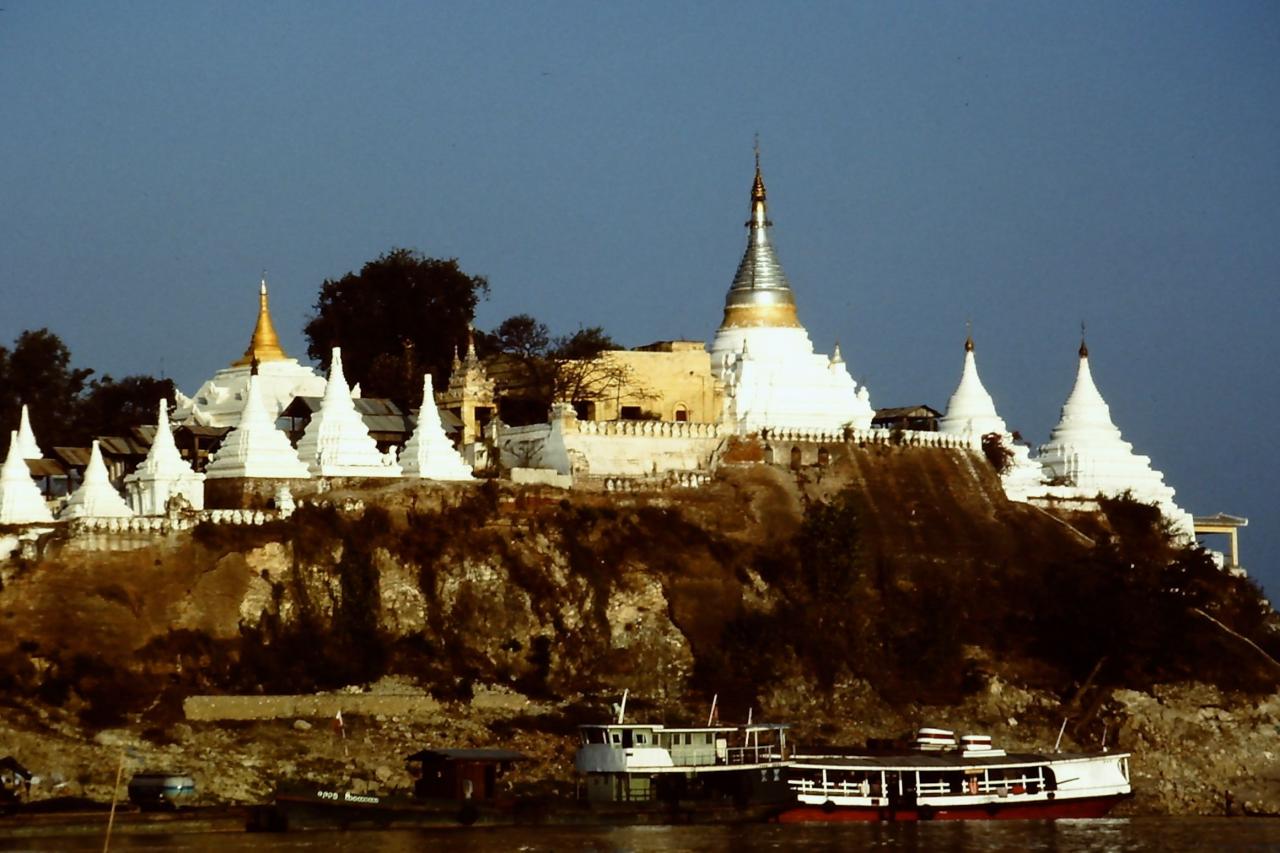
Embarking on a journey back in time along the Irrawaddy River offers a multitude of experiences, each with its own unique charm. To best tailor this adventure to your interests, several itinerary options are available, varying in duration, focus, and specific locations. These options provide a framework for exploring the river’s rich tapestry of history, culture, and natural beauty.Understanding the diverse offerings along the Irrawaddy is crucial for crafting a personalized journey.
Each itinerary is designed to highlight specific aspects of the river’s past and present, allowing you to immerse yourself in the region’s captivating story.
Taking a journey back in time on the Irrawaddy River is truly unforgettable. Imagine the serene beauty of the riverbanks, the local markets brimming with vibrant colors, and the unique culture of the region. However, recent news about Air China halting its Beijing-Honolulu flights, as detailed in this article air china halts beijing honolulu flights , might impact your travel plans if you were considering a trip to the region.
Luckily, a journey down the Irrawaddy remains a captivating way to experience a slice of history and immerse yourself in a captivating culture.
Itinerary Options for a Journey Back in Time
Different durations and focuses offer various experiences. These itineraries provide a diverse range of possibilities, from a quick taste of the region to an in-depth exploration of its historical and cultural significance.
| Itinerary | Duration | Start/End Dates | Locations | Activities | Advantages | Disadvantages |
|---|---|---|---|---|---|---|
| The Golden Triangle Adventure (7 Days) | 7 Days | October 26th – November 2nd | Mandalay, Sagaing, and Amarapura | Explore ancient temples, visit historical sites, and enjoy river cruises. Sample local cuisine and participate in cultural performances. | Provides a good balance of cultural immersion, historical exploration, and river cruising. Suitable for those interested in a quick overview of the region. | Might feel rushed for those seeking a deeper dive into specific locations. |
| The Cultural Immersion Journey (10 Days) | 10 Days | November 9th – November 18th | Mandalay, Bagan, and a selection of smaller villages along the river | Delve deeper into local life, visit monasteries, explore local markets, and participate in workshops. Enjoy longer river cruises. | Provides a more comprehensive cultural experience. Offers more time for in-depth exploration and interactions with local communities. | Potentially more expensive and may not suit those seeking a more relaxed pace. |
| The Historical Legacy Expedition (14 Days) | 14 Days | December 7th – December 21st | Mandalay, Bagan, Pyay, and the Irrawaddy Delta | Focus on historical sites, including ancient palaces, temples, and pagodas. Engage with local artisans and historians. Include visits to historical sites outside of major cities. | Excellent for those seeking a detailed understanding of the region’s history. | May be too demanding for travelers who prefer a more leisurely pace. |
Itinerary Template
A structured approach ensures a seamless and fulfilling journey. This template Artikels the key elements of a successful trip, allowing you to tailor it to your specific preferences.
- Trip Duration: The length of your journey. This determines the scope of exploration.
- Start/End Points: The initial and final locations on the Irrawaddy River.
- Specific Locations: Detailed list of towns, villages, and historical sites along the river.
- Activities: A planned schedule of visits, cruises, cultural experiences, and interactions with local communities.
- Accommodation: Details on the type of lodging (river cruises, hotels, guesthouses) and location.
- Transportation: Methods of travel between locations (river boats, trains, buses).
- Budget: An estimated cost for the trip, factoring in accommodation, activities, and transportation.
Advantages and Disadvantages of Each Itinerary
A careful consideration of the pros and cons allows you to select the itinerary that best matches your preferences.
- The Golden Triangle Adventure: A good balance of cultural immersion and historical exploration, but may be too rushed for some.
- The Cultural Immersion Journey: Offers a deeper cultural experience but may be more expensive and demanding.
- The Historical Legacy Expedition: Excellent for those seeking a detailed understanding of the region’s history but might be too demanding for a relaxed pace.
Final Review: A Journey Back In Time On The Irrawaddy River
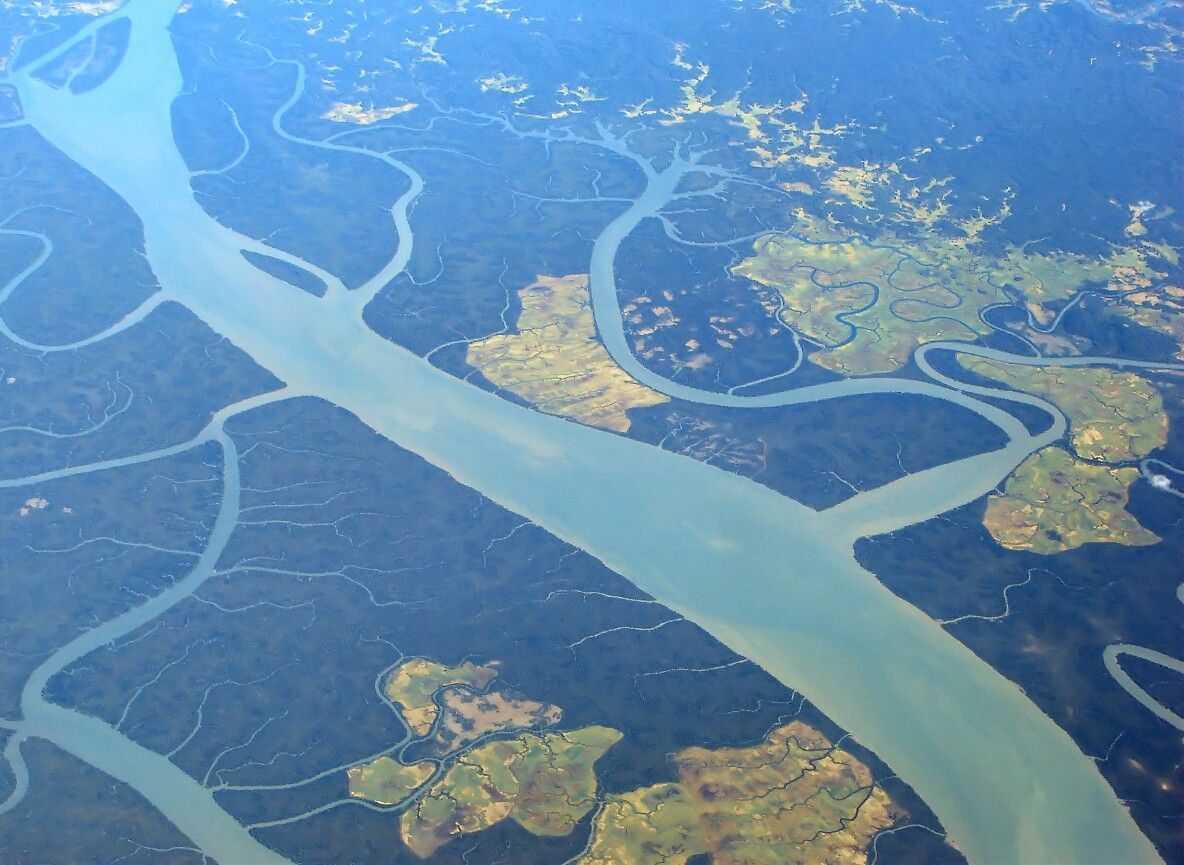
Embarking on a journey back in time on the Irrawaddy River is an unforgettable experience. This ancient waterway, a lifeline for centuries, connects us to the past while offering glimpses into the present. From the historical significance of the river to the modern-day opportunities for exploration, the Irrawaddy offers a journey that is both immersive and transformative.
Common Queries
What are some common modes of transportation used historically on the Irrawaddy River?
Historically, various methods of transportation were used, including traditional boats, rafts, and even barges. The specific methods depended on the era and the cargo being transported. The type of vessel often dictated the journey’s duration and the experience along the river.
What are the challenges and opportunities for travelers today?
Modern-day travel presents both challenges and opportunities. While modern amenities are now available, travelers might encounter potential logistical hurdles or different levels of comfort depending on the specific mode of transportation chosen. Access to amenities and the overall travel experience are subject to change.
What are some of the significant historical events connected to the Irrawaddy River?
Throughout history, the Irrawaddy River has played a vital role in trade, commerce, and cultural exchange. Many historical events and figures have connections to the river, such as prominent trade routes and the rise of various communities along its banks.




